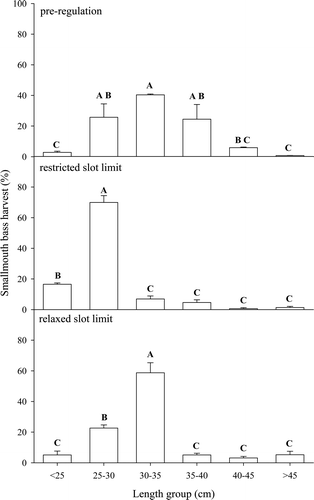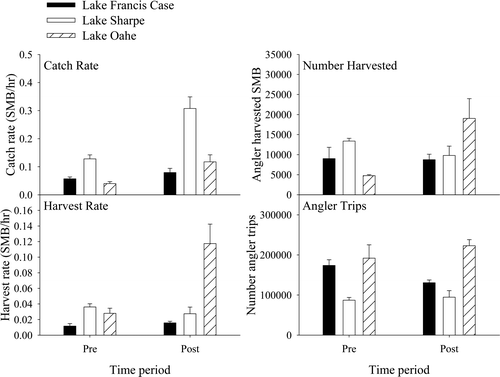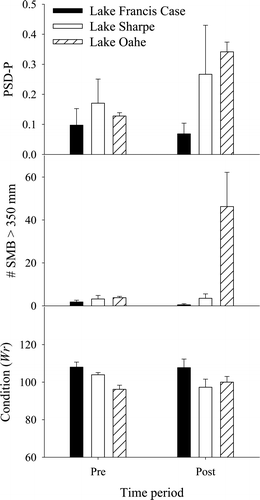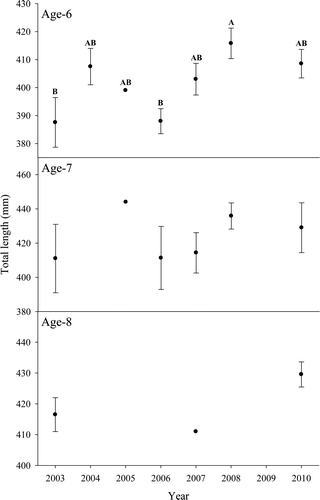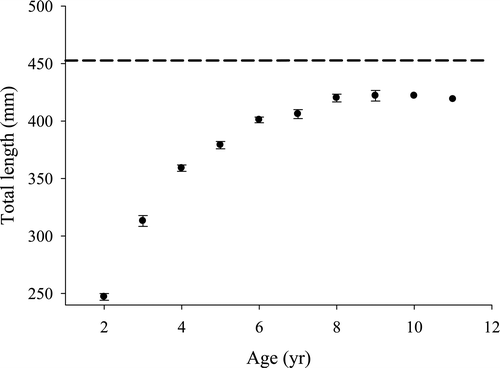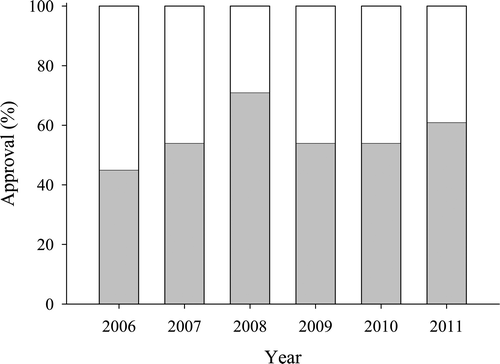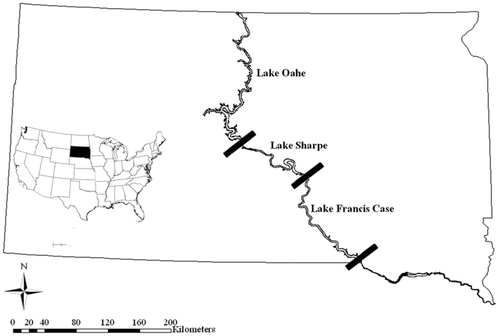Figures & data
Table 1 Asymmetrical analyses of variance results comparing PSD-P, number of smallmouth bass >355 mm caught during standard surveys and smallmouth bass condition (Wr; 1998 through 2010) from Lake Sharpe, SD (protective slot limit enacted in 2003 and 2008) and 2 control reservoirs (no size restrictions; Lake Oahe and Lake Francis Case, SD). Bold type indicates a statistical significance (α = 0.10).
